© 2013 Benden Sound Technology
Made by Serif



Background
This synth was acquired by a regular client after a long period in storage. On arrival it was found to be quite dead, not powering up at all.
It transpired that part of the mains wiring had been crushed between the rear and side panels of the case, perhaps during the original assembly. Eventually this broke the wire and must only narrowly have avoided shorting mains to the earthed case.
With that resolved, there was still plenty to do:
-
-
-
-
-
-
-
-
-
Observations
The OB-
This particular unit was notable in that it was fitted with a JLCooper filter mod.
For this, a small daughterboard (see photo) is added to each Oberheim voice card
containing a Curtis CEM3320 configured as a 4-
There were also extra rear panel sockets added for direct CV/gate control of voice card 1.
The JLC mod required slightly different EPROM firmware, and this was potentially a problem since this would be replaced by the Encore MIDI kit. However, kudos to Encore Electronics who was able to supply a MIDI kit incorporating the JLC modifications.
Rebushing the Pratt-
Sound
Listening to an OB-
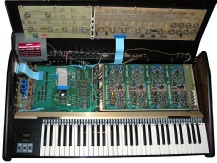
Overall view of the Oberheim OB-
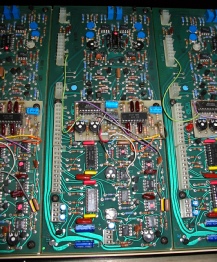
One OB-
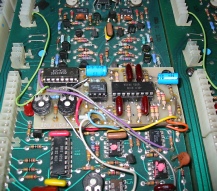
Close up of the JLCooper flter daughterboard. This adds a four-
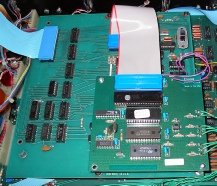
Oberheim OB-
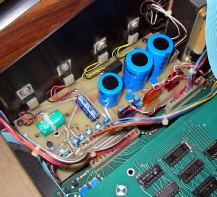
Oberheim OB-
| Crumar Ensemble |
| G-SSL Compressors |
| Lexicon 224/224X Reverberators |
| Oberheim OB-X |
| Oberheim Xpander |
| OB-VFD Display Upgrade |